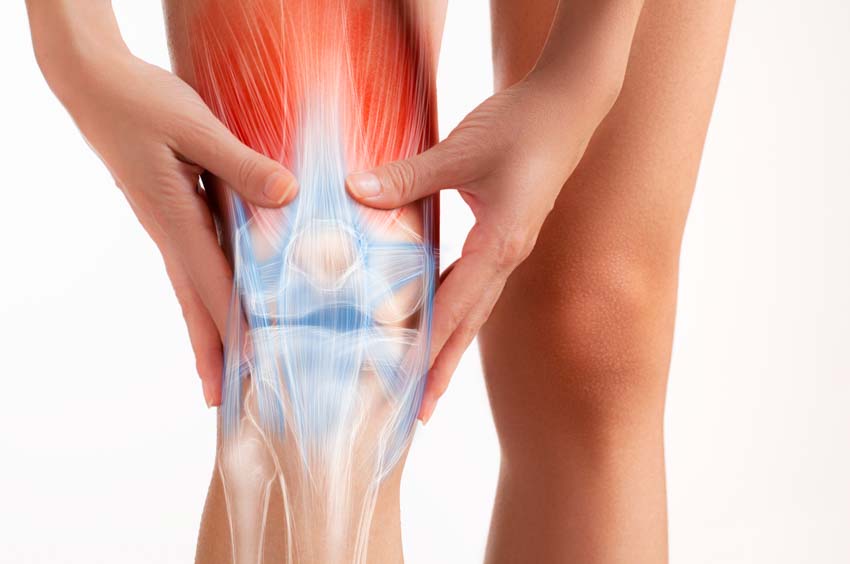
Acupuncture has been found effective for the treatment of knee osteoarthritis (KOA) in a controlled clinical trial conducted at Ziyang Hospital of Traditional Chinese Medicine. The investigation ranged from January 2018 to September 2019. The researchers determined that electroacupuncture applied along the Shaoyang meridian, complemented with functional training, markedly promotes pain relief as well as the restoration of knee joint function without causing side effects. [1]
The sample was comprised of a total of 120 patients, ages 40 to 75. All patients were at an early or mid-stage in terms of disease duration. Common symptoms included muscle dysfunction around the knees and walking impairment. Exclusion criteria were the following: osteomyelitis, bone tumors, heart, liver, and kidney failure, severe diseases of internal organs, arthritis deformans, malignant or benign knee tumors, mental disorders, or intake of any drug that might potentially interfere with the study. The 120 subjects were divided into an electroacupuncture group and an observation group. There was no significant statistical difference between the two groups prior to the trial.
Patients in the observation group were prescribed glucosamine sulfate capsules (50 mg per dose, three times per day). Aside from taking the medication, patients also undertook a training session on a daily basis aiming to restore knee joint stability and flexibility. Treatments lasted for 30 days. Intensity and duration of the training sessions were based on patients’ individual tolerance levels. Main exercises routines are listed as follows:
- Patients took a straight back sitting position, then lifted both legs and bent their feet inward.
- Patients took a standing position with two feet apart, alternately bent at the knees and hips, then returning to a standing pose.
- Patients took a supine position, alternately lifted and stretched the two legs.
- Patients took a dorsal position, alternately pulled the left and right legs closer to the chest.
- Patients took a prone position, then bent the legs so the feet could reach the hips.
Within the same time period, the same medicine and functional training protocol was applied to the acupuncture group; however, patients also received electroacupuncture treatment on two points along the Shaoyang meridian:
- GB34 (Yanglingquan)
- GB33 (Xiyanguan)
Patients took a sitting position for acupuncture treatments. Alternatively, a supine position with knees bending to a 90 degree angle was also workable. The acupuncture needles were connected to an electroacupuncture device with a sparse-dense wave. The positive electrode was connected to Yanglingquan and the negative electrode was connected to Xiyangguan. The frequency was adjusted to 4/20 Hz, with the intensity level set to patient tolerance levels. The needles were retained for 30 minutes once electroacupuncture began. Ideally, a numbing or contracting sensation was achieved to signify the arrival of deqi.
Assessing indicators included the visual analogue scale (VAS), Lysholm knee score, Western Ontario and McMaster University Osteoarthritis Survey Scale, and range of motion (ROM) scores. Outcome measures consisted of four categories: clinically controlled (knee joint pain eliminated, knee joint function recovered), significantly effective (knee joint pain and stiffness relieved, knee joint function recovered improved), effective (symptoms relieved slightly), ineffective (symptoms persist or worsen). Following completion of the treatment, the acupuncture group had a higher effective rate (56%) compared with the drug observation group (45%). The researchers note the data indicates that acupuncture markedly improves pain relief and facilitiates restoration of knee joint function.
According to traditional Chinese medicine principles, osteoarthritis (KOA) can be categorized as bi syndrome (痹症), indicating that it causes pain and numbness. Chief factors include qi and blood deficiency, liver and kidney deficiency, and collateral and meridian stagnation due to external pernicious influences and deficiency. Traditionally, treatment procedures focus on relaxing tendons and activating collaterals, combined with strengthening the bones and clearing stagnation. Acupuncture, including warm needle acupuncture, on Yanglingquan and Xiyangguan is used to considerably reduce pain and improve knee joint function.
A HealthCMi independent analysis of the acupuncture point selection shows that both acupoints are local to the knee region. The Huangdi Neijing (Yellow Emperor’s Classic of Medicine) notes that “the knee is the house of the tendons.” According to Traditional Chinese Medicine (TCM) principles, Yanglingquan (GB34) is the gathering point of the tendons (Hui-meeting point of sinew) and benefits the joints. Needling this acupoint benefits tendons and sinew, including areas related to the knees. This function is confirmed in Yang Jizhou’s Great Compendium of Acupuncture and Moxibustion, written during the Han Dynasty. This classic TCM work notes “for diseases of the sinews, select Yanglingquan (GB34).” This acupoint is also a Ma Danyang Heavenly Star point, and is specifically indicated for inflammation and numbness of the knees, cold bi pain, hemiplegia, and inability to raise the legs.
The selection of GB33 (Xiyangguan) is logical, given its location on the lateral aspect of the knee, in the depression above the lateral epicondyle of the femur. The literal translation of Xiyangguan is knee yang gate. Its function is to benefit sinews and joints and also to dispel wind-dampness. Other common acupoints used to benefit the knees that were not utilized during this study include the following: Xiyan, Xixia, Heding, SP10, ST36, ST34, LV8.
Reference:
1. Cao HB, Wang SM, Gui GF, Clinical effects of electroacupuncture along Shaoyang meridian combined with functional training on knee osteoarthritis, Chinese Journal of Rehabilitation, Dec 2020.


